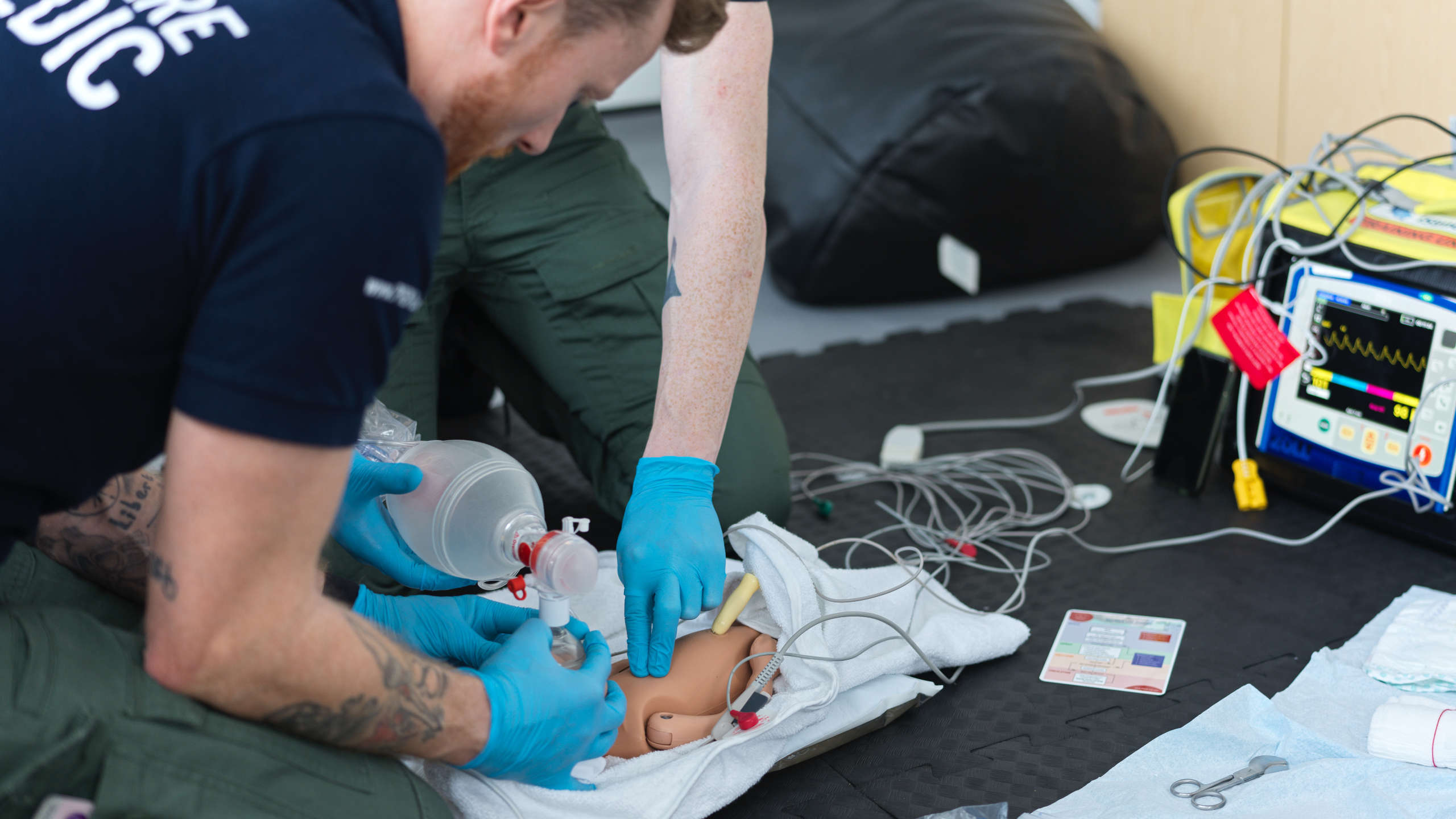
Newborn Life Support
Pre-hospital CareUse this resource in conjunction with your real-world training

Experience Summary
In this 360-degree video, observe the pre-hospital team assess and manage a newborn who has poor respiratory effort after being born, using the principles of Neonatal Life Support (NLS).
NLS is a structured approach to the immediate care of newborns requiring resuscitation at birth.
Clinical Context
Approximately 10% of newborns need some assistance to begin breathing, and around 1% require extensive resuscitative measures. When a newborn does not cry or breathe spontaneously after delivery, it is a clear sign that immediate assessment and intervention are needed. The principles of NLS guide clinicians through a stepwise process to support the newborn's transition to independent life.
The initial rapid assessment focuses on three key questions:
- Is the baby born at term?
- Is the baby crying or breathing?
- Does the baby have good tone?
If the answer to any of these is “no,” then resuscitation should begin immediately, following the Airway-Breathing-Circulation (ABC) approach, modified for the neonatal context.
1. Airway:
The baby should be placed under a radiant warmer with their head in a neutral position to open the airway. Gentle suctioning of the mouth and nose may be done if there is obvious obstruction (e.g. meconium, mucus). Drying the baby and providing tactile stimulation (e.g. rubbing the back or soles of the feet) may be enough to initiate breathing in some cases.
2. Breathing:
If the newborn remains apnoeic or has gasping respirations despite initial steps, positive pressure ventilation (PPV) with a bag and mask must be started within the first 60 seconds of life. Effective ventilation is the cornerstone of neonatal resuscitation and is usually sufficient to stabilise most newborns. Observing for chest rise helps determine if ventilation is effective. If not, the mask seal and airway position should be adjusted.
3. Circulation:
If the heart rate remains below 60 beats per minute despite 30 seconds of effective PPV, chest compressions are indicated at a ratio of 3 compressions to 1 breath (3:1), coordinated with ongoing ventilation. Oxygen may be increased as needed. If there is still no improvement, advanced interventions such as intubation or administration of drugs like adrenaline may be required.
Throughout the process, heart rate is the most reliable indicator of the newborn’s status and response to resuscitation. It should be monitored continuously via auscultation or pulse oximetry.
The goal of NLS is to establish effective breathing and circulation as quickly as possible. Prompt, skilled application of these principles can be lifesaving for a newborn who does not cry or breathe at birth.
Learning Outcomes
- Observe the assessment and management of an acutely unwell child using NLS principles.
- Understand the steps involved in the assessment and management of an acutely unwell child using NLS principles.
- Observe the safe management of a patient inactive labour.
External Resources
